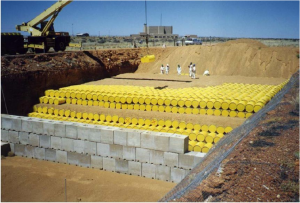“Good news – Cumbria Council have rejected plans for building a nuclear waste dump in Lake District – petitions work!!” The tweet from an account called Red Letter Theatre is typical of messages doing the rounds on social media today after a northern English county said no to building a £12 billion underground storage facility.
It also gets to the heart of the challenge facing not only British nuclear policymakers, but governments around the world struggling to find a solution to the thorny question of where to put hundreds of thousands of tonnes of high-level nuclear waste.
Communities have to be engaged to solve the problem, but the idea of hosting large quantities of radioactive material for up to a million years, is no easy sell. Despite its long-standing support for the nuclear industry, Cumbria saw mass campaigns against the dump, on grounds it threatened the region’s tourist industry and public health. Ultimately, concerns about its geological suitability for the task were cited by the authority in its refusal to take the waste.
In Sweden, inviting regions to volunteer to take on nuclear waste has proved a success. In the UK, the local community has effectively sent the government back to the drawing board. And this time with less hope: if even Cumbria, where the Sellafield nuclear power station is a major employer and contributor to the local economy, says no, what hope is there for success elsewhere?
But if consulting people is a gamble, not doing it has proved much more dangerous. Decades of government secrecy over waste burial plans have left Germany a billion euros down with nothing to show for it, and officials and the nuclear industry in a losing battle against public mistrust.
The UK has said the latest news will not affect plans to press ahead with a generation of new nuclear plants. But as governments struggle to find a way forward on waste, the world’s stockpile of nuclear material in temporary storage grows by 10,000 tonnes each and every year.


